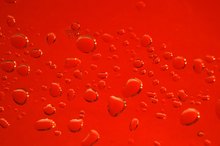Causes of an Elevated White Blood Cell Count
White blood cells (WBCs) are the foot soldiers of the immune system. They help fight infections, limit injury from other harmful substances, and initiate healing if tissue damage occurs. WBCs are made and primarily stored in the bone marrow. Only a small percentage normally circulate in the blood, but stored WBCs can be rapidly released into the bloodstream if needed. A high white blood cell count is usually related to an immune system response, commonly due to an infection or inflammation in the body. Less commonly, a high WBC count is due to overproduction by the bone marrow.
If you are experiencing serious medical symptoms, seek emergency treatment immediately.
Infection
Bacterial and viral infections are the most common causes of a high white blood cell count. Fungal or parasitic infections can also increase the number of white blood cells in the blood. The increase in WBCs due to infection is caused by a normal immune system response that stimulates the bone marrow to release stored white blood cells. They travel in the bloodstream to the site of the infection to fight the invading germs. With an infectious cause, the white blood cell count returns to normal once the infection clears.
- Bacterial and viral infections are the most common causes of a high white blood cell count.
- With an infectious cause, the white blood cell count returns to normal once the infection clears.
Inflammation and Allergy
A High Number of Leukocytes
Learn More
Conditions that cause inflammation in the body can lead to a high white blood cell count. This includes medical conditions such as rheumatoid arthritis, ulcerative colitis and Crohn disease. Tissue damage and injury -- such as burns, a heart attack and surgery -- can also cause inflammation. Inflammation triggers chemical messages that cause stored WBCs from the bone marrow to be released in increased numbers. Severe allergies and asthma are other forms of inflammation that may increase the white blood cell count.
- Conditions that cause inflammation in the body can lead to a high white blood cell count.
- Severe allergies and asthma are other forms of inflammation that may increase the white blood cell count.
Stress, Drug Reactions and Smoking
Severe physical or emotional stress can also cause an increased WBC count, including stress caused by overexertion and anxiety. Based on a 2012 research review published in the journal "Exercise Immunology Review," exercise and stress can increase levels of the adrenal hormone cortisol and other hormones 1. These hormones are thought to be responsible for recruiting WBCs into the bloodstream.
Some medications, including certain drugs used to treat inflammation, mental health conditions and cancer, can also lead to increased WBC release into the blood. For example, a study in the December 2001 issue of the "British Journal of Haematology" suggests that lithium -- a drug used to treat bipolar disorder -- signals the immune system to produce more WBCs. Smoking can also affect the bone marrow and cause increased release of certain types of WBCs, potentially increasing the white blood cell count.
- Severe physical or emotional stress can also cause an increased WBC count, including stress caused by overexertion and anxiety.
- Some medications, including certain drugs used to treat inflammation, mental health conditions and cancer, can also lead to increased WBC release into the blood.
Bone Marrow Diseases
What Are the Causes of Low Platelets & Low White Blood Cells?
Learn More
A bone marrow disorder is a less common, more serious cause of elevated white blood cells. Leukemia is the most frequent culprit. With this type of cancer, the bone marrow produces large numbers of defective white blood cells and releases them into the blood. Other bone marrow disorders, such as polycythemia vera, can also increase the WBC count. Polycythemia vera is a disease in which too many red blood cells are produced. An excess of WBCs might also be produced with this condition. Myelofibrosis is a disorder in which the bone marrow is replaced with scar-like tissue. This can cause abnormal production of blood cells leading to an increased WBC count during the initial, inflammatory phase of the disease.
Reviewed by: Tina M. St. John, M.D.
- A bone marrow disorder is a less common, more serious cause of elevated white blood cells.
- This can cause abnormal production of blood cells leading to an increased WBC count during the initial, inflammatory phase of the disease.
Related Articles
References
- American Family Physician: Evaluation of Patients with Leukocytosis
- Wintrobe's Clinical Hematology, 12th Edition; John P. Greer, et al.
- Hematology: Malignant or Benign Leukocytosis
- Robbins Basic Pathology, 9th Edition; Vinay Kumar, et al.
- Family Practice Notebook: Leukocytosis
- European Respiratory Journal: The Response of Human Bone Marrow to Chronic Cigarette Smoking
- Merck Manuals. Consumer Version. Overview of white blood cell disorders.
- U.S. National Library of Medicine: MedlinePlus. WBC count.
- George TI. Malignant or benign leukocytosis. Hematology Am Soc Hematol Educ Program. 2012;2012:475-84. doi:10.1182/asheducation-2012.1.475
- Riley LK, Rupert J. Evaluation of patients with leukocytosis. Am Fam Physician. 2015;92(11):1004-11.
- Lim EM, Cembrowski G, Cembrowski M, Clarke G. Race-specific WBC and neutrophil count reference intervals. Int J Lab Hematol. 2010;32(6 Pt 2):590-7. doi:10.1111/j.1751-553X.2010.01223.x.
- American Cancer Society. Blood transfusions for people with cancer.
- Medline Plus. Blood count tests.
- University of Rochester Medical Library. What are white blood cells?
- Kaushansky K, Lichtman MA, Prchal J, Levi MM, Press O, Burns L, Caligiuri M. (2016). Williams Hematology (9th ed.) USA. McGraw-Hill Education.
Writer Bio
Leann Mikesh holds a Ph.D. in pathology. She has trained at the University of Virginia Medical Laboratories and has over 15 years experience in clinical, cancer and immunology research. Dr. Mikesh performed kidney and bone marrow transplantation compatibility testing to put herself through graduate school.








